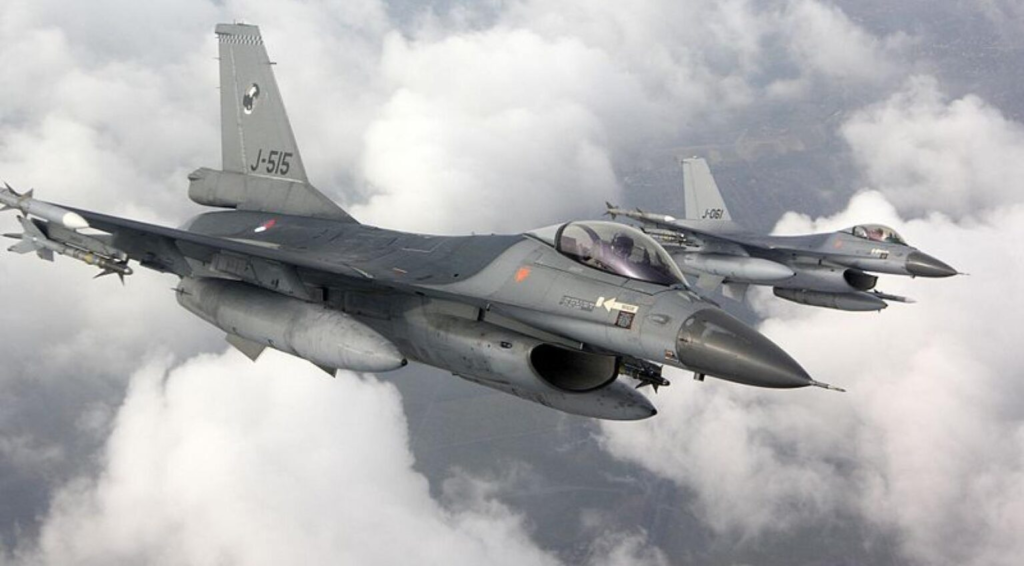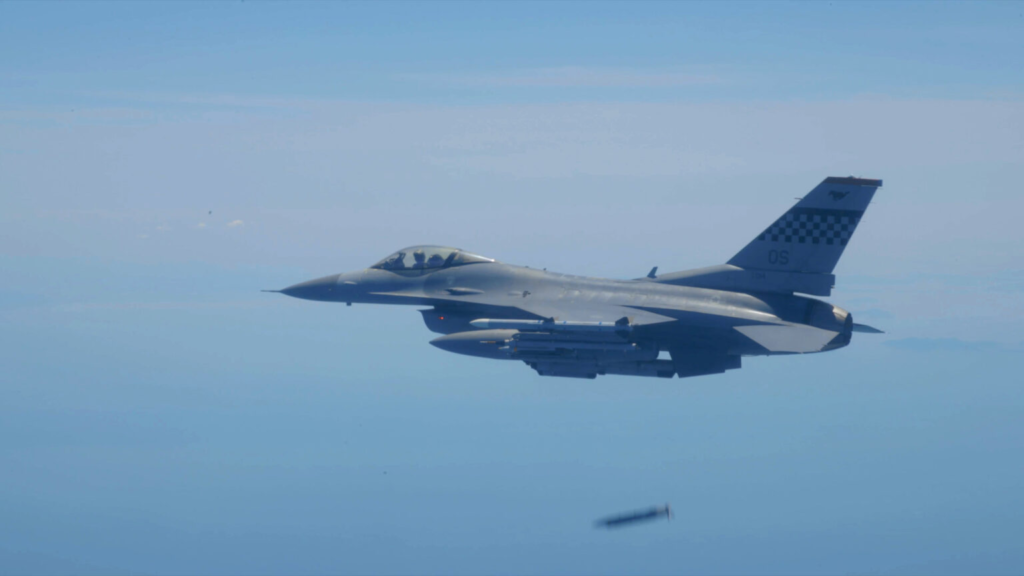Ukraine’s demand-requirement for F-16 fighters strongly resembles something. As it is done in roughly the same tones and with similar arguments as last summer, when Kiev wanted Western tanks. In the end, he takes the latter at increasing rates, so we are probably living a repetition of the scenario, but this time even more inflated in terms of demands and criticality.
Why Ukraine wants F-16 is explained by several reasons. The current composition of its Air Force, from what is left of MiG-29s from its original composition plus any concessions from Poland and Slovakia is certainly decreasing, either from damage, or from shooting down, or from accidents (which in war intensity are increasing). So the need for new aircraft and even higher capabilities is a given, just as their source is also a given, i.e. the western states. And as an almost logical automaton, the F-16s appear: which is the most widespread Western fighter, with the largest stock of weapons and spare parts, the most training infrastructure, and with an abundance of personnel to support.
For Ukraine in particular, an air superiority, or even an increased and threatening presence in the air is crucial as it will allow it to launch any counterattack, without the constant fear that it will be “broken” by even risky Russian airstrikes.
Politically now in the West, we are again almost in the same “phase” as the one with the tanks. The USA, which must give the green light, since American-made fighters need the export-concession license from there, declare that they are “problematic with the issue”. That is what Germany was saying last year, when it had to give an export license for the Leopards to go to Ukraine.
Inside the US, however, there is an initial loose cross-party consensus, as both Republican and Democratic congressmen and senators have spoken in favor of the concession, but without being particularly pushy. In March, a cross-party group of 8 senators had sent a relevant letter to the Secretary of Defense, Lloyd Austin. Among them, however, were not some of the “big names” of the American Senate, that is, those who will be able to express important groupings. The letter was released by Mark Kelly, Democrat from Arizona, a respected senator, former astronaut and Navy pilot, who was elected for the first time only in 2020, so he is still considered a “junior” in the old age of American politics.

A similar pressure effort had been made in the House of Representatives, where in February a group of 16 lawmakers, from both parties, had addressed a similar appeal to President Biden. The leader of the effort here was the congressman from Maine, Jared Golden, a Democrat, but also a “freshman”, with his first election in 2019. But he had a similar perception to Kelly, because he had served in the marines and participated in operations in Iraq and Afghanistan . It is no coincidence that the protagonists – for now – are ex-military-turned-politicians, as they indirectly echo the perception of military circles in the US for more strengthening of Ukraine and corresponding deterioration of Russia.
However, the Biden administration does not yet appear ready to approve the move. The official justifications are mainly operational/technical, i.e. it is argued – and rightly so – that a fighter jet is many times more complex than a tank, that it takes many months to train a pilot and perform in it, that a large support flow is required and that ultimately ” Ukraine currently has other priorities.” The latter is also interesting as Ukraine itself is asking for F-16s, Zelensky has even said “for the West to overcome the aviation taboo”, but the US interprets Ukrainian needs differently!
What is stopping the Americans from reinforcing Ukraine with F-16s?
Although in the meantime they allow relevant investigation: already Ukrainian pilots in the US are tested on simulators to determine their level and how long it will take to train in the fighter.
Let’s say here that the issue of training is not at all simple, as Ukraine has several fighter pilots, but few speak English at a level that allows them to be trained in Western fighters, while their experience is in Russian/Soviet aircraft, systems, doctrines, tactics, contracts and procedures. In other words, their “distance” from a western fighter is not only in the handling of the aircraft but more generally in the culture and the NATO operational environment that it incorporates. And the same applies to their technicians. And these are not easily covered in a few months.
But more serious for the USA is the issue of the war in Ukraine. If the preparation for an F-16 concession officially begins with a delivery horizon after many months, probably more than a year, we have a commitment to a long-term conflict with Russia. And at a long-range level, that is, something that can confirm Moscow’s huge suspicion that “a deep strike on our territory and an all-out war against us is being prepared.”
At the moment the western weapons systems going to Ukraine are of limited range, about a hundred kilometers on land, maybe more, from artillery and guided rockets. But an F-16 fighter brings completely different “mathematics” to the conflict. For example, the distance from Kharkiv in northern Ukraine to Moscow is just over 600 kilometers as the crow flies. And obviously an F-16 can carry a lot more war load and with a lot more precision than a small-medium drone. Like those that Ukraine has already unleashed inside Russia, more for reasons of impressions and psychological warfare.
One might say, what is stopping the Ukrainians from already making such an attack, even for demonstration inside Russia with MiG-29s. We already mentioned it, and should this happen, Russia knows that it will be a theatrical move without content. But a squadron of F-16s, which can be two, with guided bombs, inside Ukraine signals an existential threat, or at least that’s how it can be interpreted by the “reclusive” Russian leadership. So there is a strong question of “control” of the Ukrainian leadership on how to handle such a weapon. Furthermore, its concession will inflate the rumor that “foreigners are flying them”, something that is already being circulated internationally and for other weapon systems in Ukraine, that is, that their operators, even the advisors-trainers, are “foreign”.

Another problem is which Western country will “take the lead” on a potential F-16 delivery. A few days ago, the Danish Minister of Finance, Troels Lund Poulsen (temporarily acting as Minister of Defense) said that his country will make the relevant decision before the summer, but that “it must be a joint effort”. Denmark has around 30 active F-16 AM/BM, which will be replaced by F-35. The Dutch, who have 40 F-16As, have said something similar, while the Poles, surprisingly, have declared that “it is not the time for such a discussion”. Romania may be a candidate, as it has just decided to get F-35s and has 14 F-16 AMs and will also get 32 from Norway. Greece is out of the discussion for obvious defense reasons.
All of the above make up a complex, primarily political issue but also with serious operational obstacles. The US remains dominant in its support of Ukraine, but it weighs every time what weapons it sends and how they will be “accepted” by Russia. The latter to this day, despite threats and warnings, seems to accept that it cannot geopolitically prevent the flow of advanced Western systems to Kiev, so it fights against their panspermia.
Clearly, however, the granting of fighters will raise the international tension even more and perhaps – here is another fear of the West – “provoke” not the Russian reaction, but the Chinese one! In other words, it should be considered by Beijing that everything is now open in Ukraine and that it is an era of open questioning of the USA. So start a flow of spare parts and weapons and ammunition to Moscow, e.g. with a status of sale and not concession (to maintain some pretexts). Not fighters and tanks, i.e. heavy weapons that will be seen immediately, but all the rest that Russia needs so much today to cope with its losses and maintain its own defense production. In other words, as another “tickling” of the USA, a test of its tolerances and its willingness to escalate…







